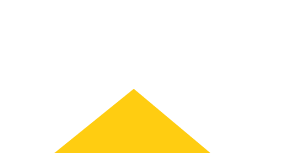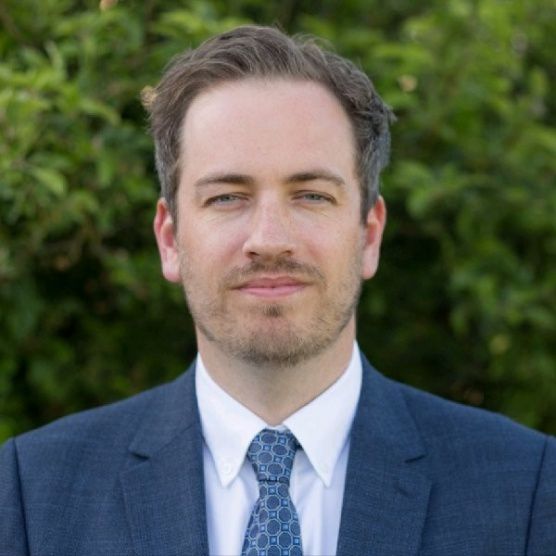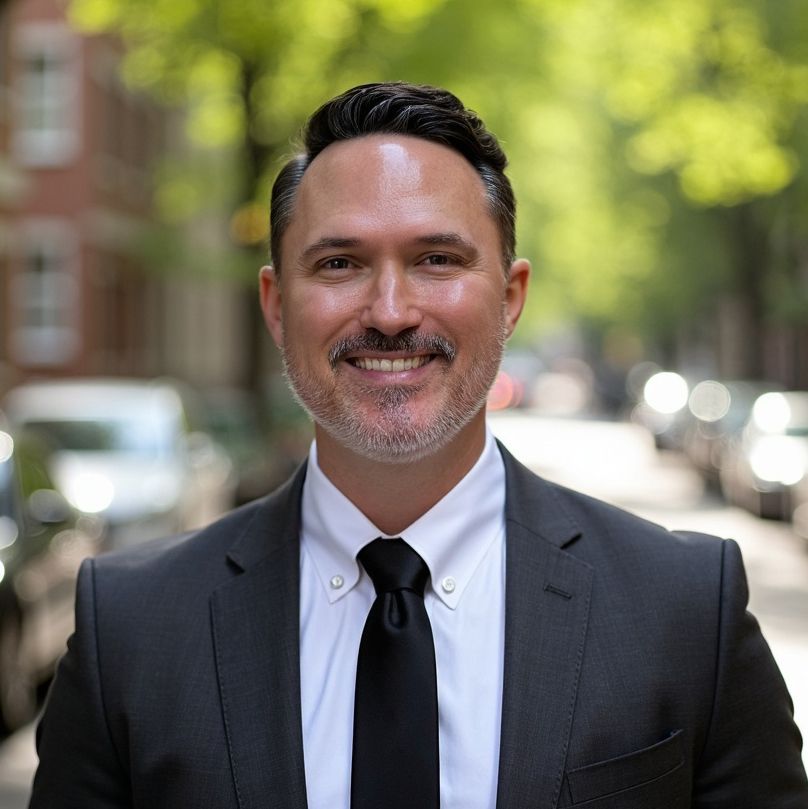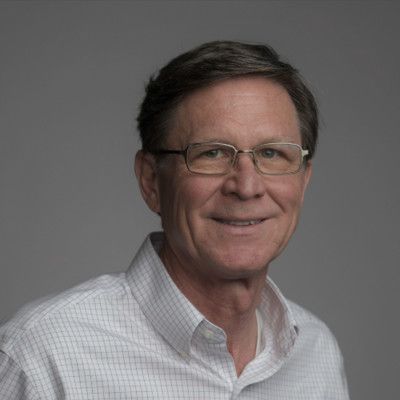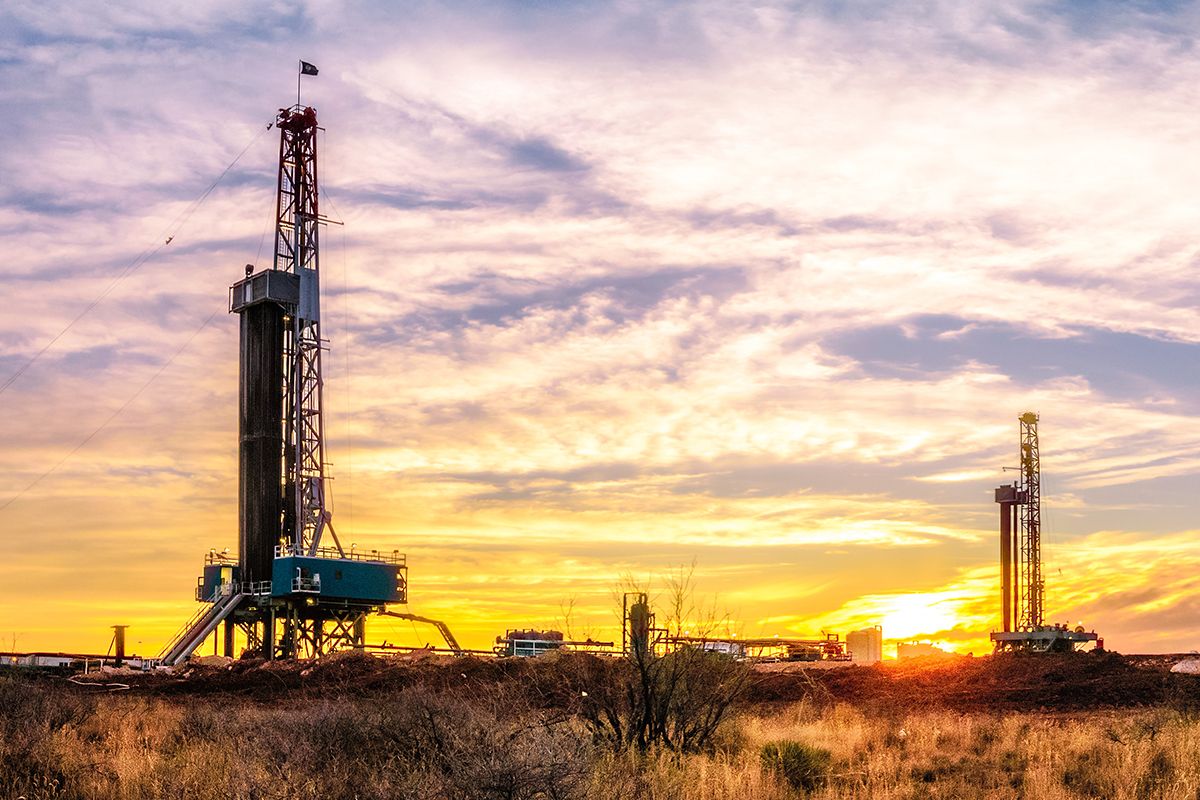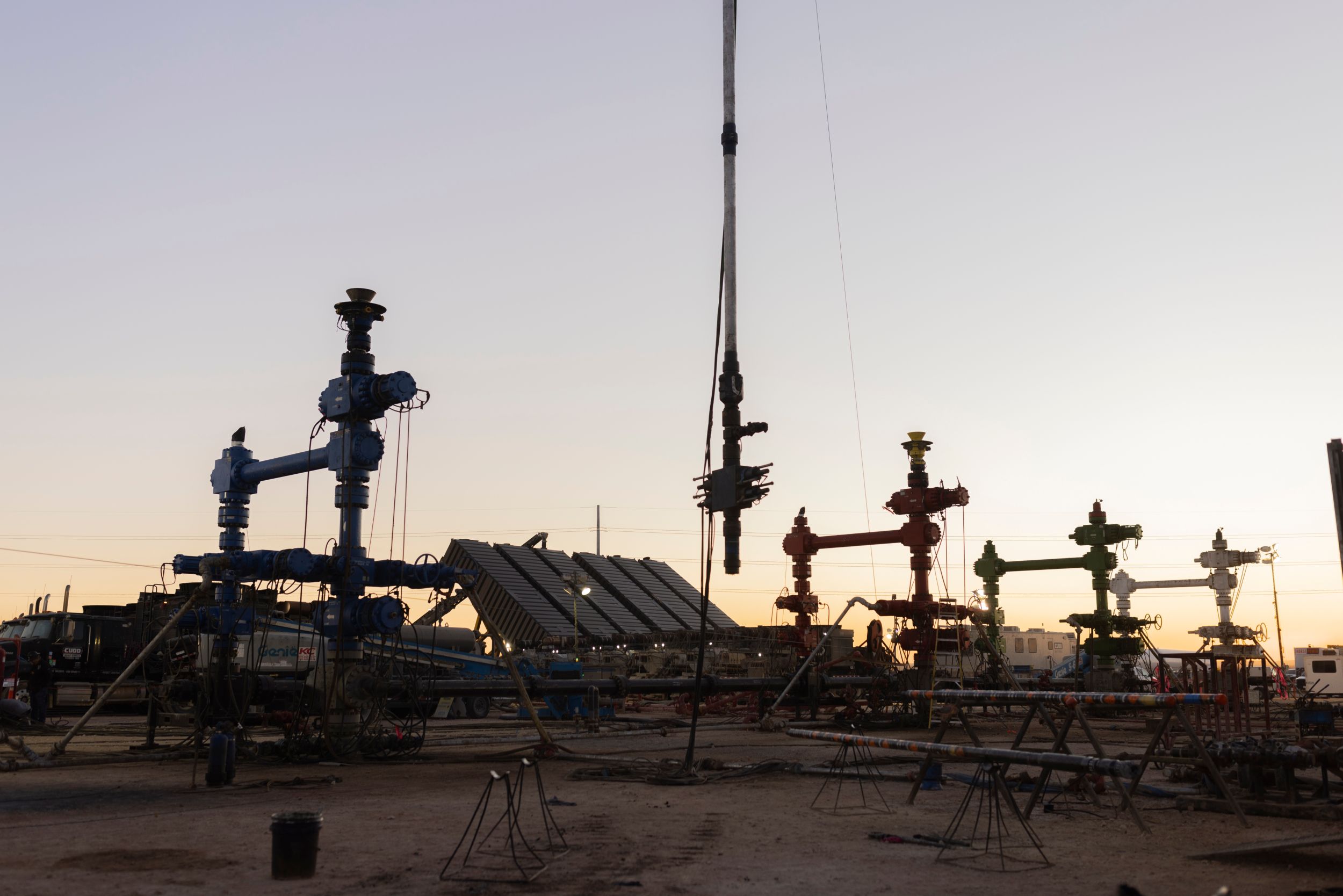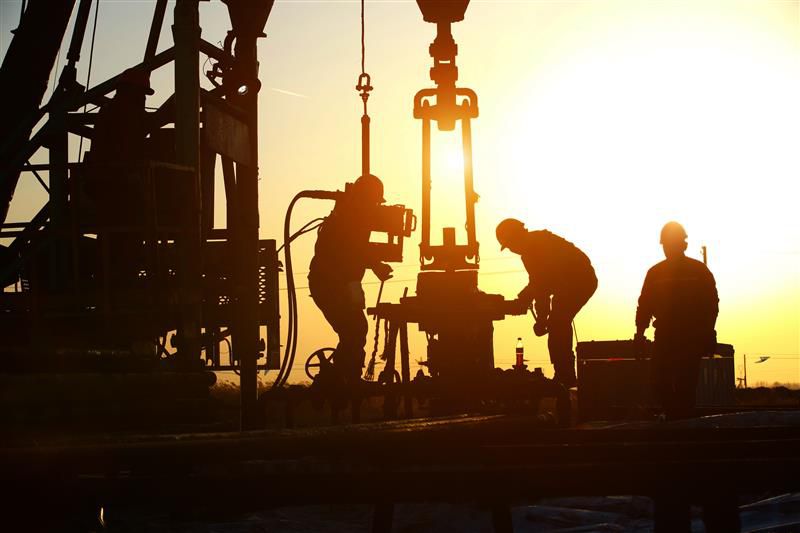00:00:02 Narrator
This episode of the Energy Pipeline is sponsored by Caterpillar Oil and gas. Since the 1930s, Caterpillar has manufactured engines for drilling, production, well service and gas compression. With more than 2100 dealer locations worldwide.
00:00:20 Russell Stewart
Caterpillar offers customers a dedicated support team.
00:00:23 Narrator
To assist with their premier power solutions.
00:00:28 Russell Stewart
Welcome to the Energy Pipeline Podcast with your host, Russell Stewart. Tune in each week to learn more about industry issues, tools and resources to streamline and modernize the future of the industry. Whether you work in oil and gas or bring a unique perspective, this podcast is your knowledge transfer hub. Welcome to the Energy Pipeline. Hey everybody. As always, thanks for listening. And as always, thanks to Caterpillar Oil and Gas for making this podcast possible. Today I have two guests on the show, Stephen Peters and Gary Hicken. And Steven and Gary are with nov Digital Services. Stephen and Gary, thanks for coming on the show.
00:01:12 Gary Hicken
You're welcome, Russell. Thanks. Thanks for having us.
00:01:14 Russell Stewart
So I was introduced to you guys by Jason Duff. Jason is a friend of oggn. I've known Jason for quite a few, quite a while and actually had Jason speak for me one time when I was chairman of API Houston chapter. And he was gracious enough to take his time to do that. He was actually with IBM at the time. He's now the VP of Digital Services over there at nov. Guys, introduce yourself for me. Tell me what you guys do over at nov Digital Services.
00:01:51 Gary Hicken
Sure. Do you want to go first, Stephen?
00:01:53 Russell Stewart
Yeah, yeah. Gary, let's start with you because you're the guy from West Texas.
00:01:58 Gary Hicken
From way west Texas. Yeah. Okay, sounds good. Yeah. Gary Hicken. Yeah. So I work in nov. My role is a Director of Business Development and Customer Support. I've been with NOV for coming up three years now. I got reminded by my LinkedIn notification I got some comments on there, which was nice. So that came through just yesterday. So, yeah, I moved over to the States a year ago, so based in Houston. And yeah, I've just been kind of acclimatizing to the heat, getting used to the change from the Scottish cold weather and the eastern heat. So I'm not quite melted yet, but I think I'm getting used to it. It's a bit harder on the golf course than it is back in Scotland, but yeah, but yeah, I'm a digital guy. I've been in this space for around 21 years. I've kind of worked all over the world, obviously done some stuff in the North Sea, used to go and visit places and install equipment on rigs, offshore Africa, the Middle east. And I spent some time down in Abu Dhabi for two years and over in Bahrain for around five years, where I used to cross the bridge to Saudi Arabia. On a personal note, I've got two kids. I'm married, two young boys, 11 and 12. They're the best of friends, worst of enemies at the moment, which is, which is fun. And I'm also into music big time. So I play a bunch of instruments in my spare time, you know, spend time with the family and trying to get back into some road cycling, keep myself fit as well. So that's a little bit about me, Russell.
00:03:35 Russell Stewart
Okay, well, I appreciate that. So Jason told me, said, Gary is Mr. Drilling. And then you came back and said, no, I'm Mr. Data.
00:03:45 Gary Hicken
Which I. Yeah, I guess.
00:03:47 Russell Stewart
Well, I'm going to segue into that here in just a minute, but let's get to Stephen. Stephen, introduce yourself.
00:03:53 Steven Peters
Sure. Steven Peters. I lead product on the MAX platform. So the max platform is Nov's IoT data and application platform. I've been with NOV for about two years working in this role. Before that, I was consulting as part of capgemini, so working with nov and other oil and gas customers on similar space software development data projects. I spent my, about 20 years of my career in software development. I've worked in a number of different industrial spaces and I spent a little bit of time in the military as well.
00:04:32 Russell Stewart
Well, thank you for your service. Okay. All right, so, Gary, going back to you being Mr. Drilling and Mr. Data, Jason suggested that we kick off this show with the story of how the electronic drilling recorder became the heartbeat of digital drilling. So let's start there.
00:04:54 Gary Hicken
Yeah, well, I've got to address the whole Mr. Drilling, Mr. Data thing first. So Jason's trying to, he's trying to drop me in it there. So I'm a data guy that's been, you know, Since I was 19 years old, I've been in this space and I've kind of skirted around the drilling stuff. So my, my focus has always been how do we get the data, how do we get the information to the smart drilling people that are going to execute on that. So that's where my Mr. Data point came from. But yeah, Jason was totally right when he mentioned, you know, the EDR being the kind of heartbeat that's there. So, of course, you know, when we're doing drilling for oil and gas, it's a super complex thing to do. Right. There's so much going on. There's so many things you need to be aware of.
00:05:35 Russell Stewart
Yeah. A lot of people don't realize That I have no idea how complicated the process. It's a tremendous thing we do. If you sit down and, and, and break it down and everybody just thinks, oh, you just pull up to the gas station and you know. Yeah, yeah, so go ahead.
00:05:51 Gary Hicken
Yeah, yeah, let's go and drill a hole in the ground. That's simple, right, Right, exactly.
00:05:56 Russell Stewart
Yeah, yeah, yeah. And then find oil.
00:05:59 Gary Hicken
Yeah.
00:06:00 Russell Stewart
And then get it, and then, and then get it out that, you know, then process it. So yeah, complete.
00:06:04 Steven Peters
It's also, it's also interesting too that you know, the journey that nov has taken to get here, you know, this isn't something that's happened over the last 10 or 20 years. Nov, specifically, MD Taco has been in the sensor data collection business for almost a hundred years now and that we've used a lot of that experience to get to the point where we're at.
00:06:27 Russell Stewart
Okay, now wait a minute, we're gonna have to back up here just a minute. I've, you know, I'm an old drilling, I'm a mud engineer. Okay. And I, you know, I worked, I didn't work for the majors. I worked for small independent companies and, and we didn't exactly always work on state of the art offshore rigs or even state of the art onshore risks rigs. So this idea of digital data and all this sort of stuff, it's new to me. You say it's 100 years old.
00:07:04 Steven Peters
Well, think about it. You know, we've been collecting information on the drilling process all the way back to the analog gauges that you're used to. You know, MD Tatco started in 1929 with highly specialized analog gauges to understand like what was going on in the drilling process. So you know, digital, digital didn't just birth out of something, you know, magical like we. It's a, it's a technology that's evolved from the sensors that have been in, you know, guiding operations for 100 years.
00:07:34 Russell Stewart
Well, okay, and that's true, I guess for the, and where you guys come in. It's being able to put all this together that's becoming, you know, the new thing or whatever. I like what's said on your website. I like the little play on words you have that it's a dirty job getting clean data.
00:07:59 Gary Hicken
It's true though. You know, a lot of tools now, they rely on data, right? If you look out there and you sort of want to chat GPT or somewhere and say, how is the oil and gas industry evolving? A lot of it's going to focus around Data, AI, machine learning, all this stuff. Right. And that's all great, but there's this old phrase, and you know, sorry to say this on your podcast because I'm sure people have heard it time and time again, but there's this whole garbage in, garbage out phrase. Right. If you're not getting good information, the information that you're trying to detect from that data is not going to be good either. Right. So, you know, that's why it's so important that these EDR systems provide the highest quality information, the highest frequency, to allow our customers and people in the field to effectively do their job and have a bit of trust in their data. And that's something, you know, we nov, with our heritage, are extremely proud of. You know, we've done it literally for years. And you know, it's, it's, it really is that heartbeat. Without good data, you can't, you know, use that information and do all these AI ML fancy things and even moving to even more stretched areas where, you know, operators are looking to deman the rigs and where they're taking people off of these facilities and trying to do things remotely. If you don't have the network connectivity and the solid information, you know, you cannot do that. Right. So that's really where nov excels in. By being able to provide that high quality, trustworthy information allows you to go that next step and try and reach those objectives that the industry is all pushing towards. So I think that's a really key thing, Russell, that people kind of sometimes overlook, overlook at the fancy tools and they won't think what's going on, what information is feeding those fancy tools to get us to a resolution and get us to this new way of doing things in our industry.
00:09:46 Russell Stewart
Yeah.
00:09:46 Steven Peters
And I think, you know, what we're talking about here is the electronic drilling record, the EDR system. And a colleague of mine used a really fantastic analogy. You can think of the EDR system essentially as like the ICU nurses station in a very busy emergency room. This is basically the hub of operations where you can see how are my patients doing, what's their heartbeat, what's their oxygen levels, where is the rest of my staff? How are they operating? You know, it's, it's, it's really where critical real time information across the entire operation is brought together. And that's what EDR is providing for the drilling industry.
00:10:28 Russell Stewart
Okay. And so did NOV pioneer this edr?
00:10:33 Steven Peters
We didn't. So, you know, EDR was introduced in about, you know, the mid-90s or so, or you know, early 90s and RigSense, which was introduced in the, you know, as one of the first like platformized solutions, you know, we're moving from, let's say a generic EDR system to something that is approaching it from like a standardized hardware and software and modern interface perspective. That was when Rigsense was introduced in like the early 2000s and that's when it started to become like a true operational tool. You know, that's, we're talking about touch screens, we're talking about networked information, real time collaboration in that tool. And NOV really set the flag on the ground with Rigsense very early on, has become an industry standard. So even though, you know, EDR may have not started with nov, we definitely planted our footprint there and have been continuing to like advance and excel that space for decades.
00:11:35 Gary Hicken
Yeah, and I think it's really cool. Sorry, go ahead, Justin.
00:11:37 Russell Stewart
That's actually this MAX system that you talked about a while ago.
00:11:42 Steven Peters
Well, actually the rigSense system predated Max. So if we, if we think about Rigsense, Rigsense was that first operational tool where we brought, you know, the standardized hardware software together and then Rigsense was fed into a system called well, data, which started to make that information available to back office personnel. So now we have people on the rig site as well as engineering teams and operation teams that may not be on site help to collaborate in that space. But what we found, you know, about seven years ago is that the EDR system was really good at doing something very specific and we needed to start collecting more data, expanding the capabilities of that system as organizations continued to look to optimize safety, drilling optimization, improving overall well outcomes. And that's where MAX kind of came into the picture.
00:12:40 Russell Stewart
Okay, so let's go back to, let's go back to all these sensors and everything. I mean, anybody who's, who's been on a drilling rig knows, you know, how, how hard the, the, the drilling. I mean, you know, you got all this, this, these pipes and these machines and these, you know, how do you, how do you ruggedize these sensors?
00:13:10 Gary Hicken
Years of experience, I think. Right. So it's a, we know that we're dealing with a harsh environment. As you say, there's, you know, just, I think it was a very nice video and you kind of referenced it. So on our website it talks about the, you know, it's our job getting clean data from these dirty sites. So there's, you know, we understand the environment because of our legacy, as Stephen said, you know, MD Topco itself Starting from that, weight indicators that aren't Decker weight indicator and moving to the topcore solution. You know, we've been there, we understand what we're getting into. So, you know, we know what we need to do to ensure that we've got the right equipment on site and also how to maintain it as well. So we have to go through sort of strict maintenance windows and making sure that everything's up and delivering data to our customers on a regular second by second basis. Because that's the thing that has changed over the years. You know, there's a thirst for data, there's a thirst to have more information because we're using that information on a day to day basis. So that thirst for data increases people's wants for that information, which increases the need for us to ensure that that information is constantly streaming 247 without fail. So I guess the answer is we understand the rig site, we understand the challenges, and we create the correct equipment and infrastructure to ensure that you're up as much as we can be on that rig site with those sensors and equipment. Yeah.
00:14:32 Steven Peters
And to build on that, like Nov and Max, we're not just providing you with a dashboard. You know, again, we're leveraging almost 100 years of environmental experience deploying hardware out in the field and being responsible for it. Because we are the manufacturer, when we ship something out the field, it's not someone else's responsibility. So we design the sensors, we build the edge data collection systems, and we deliver the apps. So we are really the sensor to screen model that allows us to not only understand the field but and the harsh environment and what's required to succeed there, but also that custody and the value of that data as we move all the way to where it brings impact to operators and contractors.
00:15:17 Russell Stewart
Okay, so there's two things there. And one, you said that I was about to ask that question. Talk about getting the sensor to the screen.
00:15:27 Steven Peters
Sure, yeah. So when we think about Macs as we've done, and if you think about our existing systems, you know, with Rigsense, we develop all of the sensor packages that were deployed out there. So even from early days of edr, we were operating on this model where we built and owned all the sensor packages deployed. We had our data acquisition system, which is Rigsense, that data was sent to our infrastructure, so our cloud systems to make that data available to applications like, well, data, and then finally that is served up to our users so that they can actually interact with that information, derive value from it, make decisions, and we're Extending that with max. So with Max is we built on top of the existing EDR and Rigsense system, adding additional data collection technology like Max Edge, which allows us to mount edge devices on essentially any piece of equipment out in the field, mount sensors on anything that's required, bring all of that data together, move it into the same environments that the drilling data is going into, so that it can go either directly to our customers if they want to use that data independently, or go into the next portal, which is our application layers to where clients can interact with that information, derive value, really drive operational impact from it. And we're also using that in some of our additional products like dba, our Drilling Beliefs and Analytics, Kaizen, which is an ROP optimization solution, and a number of other AI solutions where we're taking that data, enhancing it so that our customers can make even increasingly more complex, timely decisions off of that information.
00:17:15 Russell Stewart
Okay.
00:17:16 Steven Peters
We really deliver the complete package, whereas other clients come in and piggyback off of our data. We deliver the entire package and can ensure reliability and quality.
00:17:28 Russell Stewart
Well, I think the point. It's not just that you provide data, it's. It's data derived solutions, Right?
00:17:36 Gary Hicken
Correct.
00:17:37 Russell Stewart
And that operates in two ways. One is what you call at the edge, and then the other is in the cloud. Talk about that.
00:17:47 Gary Hicken
Sure. So essentially we understand that, you know, there are two customers that we're serving in nlv, Right. We've got the folks on site on the rig and we've got folks in the office. Sometimes the folks on the rig site can be overlooked and they can have one system and folks in the office in the cloud can have another system or another solution. So we recognize this problem in nlv and what we've tried to do is ensure that the solutions start at the edge. And there's multiple reasons for doing that. I'll focus on one, which is our Drilling Beliefs and analytics solution, which is essentially a tool for detecting issues like stuck pipe, maybe a washout, maybe there's a. Your bit is degrading, you're wearing your bit out too quickly. So we've got these solutions and if we're delivering those solutions, say in the cloud, only then, you know, our customers have to communicate to the rig, but we're delivering them on site, on the rig, at the edge. Our customers on the rig can see that as well. And then communicate and collaborate with the folks that are in the office to come up with the best action.
00:18:50 Steven Peters
Yeah, and imagine, imagine the scenario where different.
00:18:56 Russell Stewart
Go ahead, Stephen.
00:18:59 Steven Peters
Yeah, Imagine the scenario where let's say we're relying on critical analytics to tell us when a problem is occurring. And let's say we're running those on the cloud. And it's funny because we just had a blip in our connectivity on this call, right?
00:19:16 Russell Stewart
Yes, I just made a note of that. I'm hoping I can edit it out.
00:19:23 Steven Peters
I want to call that out because it's going to prove my point. Imagine that blip in connectivity happened on a drill site that was relying on that information to make judgment calls. That's why we deploy things on the edge. So we focused heavily on the edge because it allows us to reduce the impact of disruption of connectivity services. We operate in remote sites on highly critical operations. And our platform MaxEdge allows us to deploy advanced logic locally on site to reduce any of the impact there. It also helps us to mitigate some cost associated with sending full data sets back to the cloud. So it can be a dramatic cost mitigation tool for customers by keeping that processing local on the edge of. And then we have other tools that are running in the cloud. So you know Gary, if you want to get into some of the stuff that we have running in the cloud as well as our Max partner program, yeah, sure.
00:20:31 Gary Hicken
So in the cloud, like I said, our kind of legacy. But what we're known for in ndtoco is our well data solution. So that is our real time basically your eyes into your operation. So that's providing real time second by second information of all those sensor information that's coming in, also additional sensors. One thing I want to call out is that we don't just collect our own data and send that through. There are other services happening on the rig and we're there to also aggregate that information to give our customers a single view of the world and a single view of the operation. So we've got that coming into well data which outputs things like KPIs of the operation, looking at things like connection times, tripping speeds, all that good stuff. And then we have other tools as well. We have some dashboarding tools where we can connect to drilling production completions data and provide real time dashboards for those operations along with analysis of that information directly in the cloud. So what we have with our Max solution, which we call Max Portal in the cloud is that one stop shop where our customers can log in there and hit our tools and then also our partner tools. So Stephen mentioned a partners program. So we realized in NLV we cannot do everything ourselves. So we are working with the best partners in the industry to provide solutions to our customer based on our data backbone, so they essentially can tie into the data that we're collecting and provide additional solutions to our customers so they can get everything they need from that information.
00:21:55 Russell Stewart
And along with that, you guys are teaming with IBM and AWS on some kind of surface digital product or service or. Tell me about that.
00:22:12 Steven Peters
We are. So we've got a number of exciting partnerships that we'll be announcing here in Q4, and we have the early partnership with IBM and AWS. AWS is providing us with the scalable infrastructure that we need in order to grow our compute power on the cloud as well as cover the global geographic regions. IBM is providing us with advanced computing AI tools as well as deployment tools for us to deploy in any environment that we need. And then finally, NOB is bringing a proven IoT and application platform as well as that heavy operational experience in drilling completions and production, as well as a very large data set in which we can derive value for our customers.
00:23:07 Russell Stewart
Okay, so Gary, back to all these things that you're measuring on the rig and in real time. Since I do come from the drilling fluid side, how is technology or digital technology doing as far as checking. Checking the mud?
00:23:31 Gary Hicken
Good question. Right, so the new sensors being introduced, right? The old method of checking the module or the old funnel.
00:23:37 Russell Stewart
Yes, yes, I've done that, done that many a time.
00:23:40 Gary Hicken
There you go. So now there's things like we have, like Coriolis sensors will actually sit there and measure that in real time. So the benefit of us being able to collect any data from any source and deliver that, we can connect to those types of sensors to upscale that a little bit and provide a real time analysis of that to, to avoid the old funnel monitoring method, which I'm sure, I know is dear to many people's hearts, but there are other ways now to do that and get a real time fluid property reading that can be used to support some of these additional tools. Sorry to tell you that. Bad news, Russell?
00:24:14 Russell Stewart
No, that's. That's actually that I would have loved to have had that, that technology available back then. I find that. I find that very fascinating. I've been. Because, you know, I mean, the drilling fluids is, you know, it's the heart and soul of, of the drilling operation. If, if, you know, if you don't get that right, nothing else, nothing else goes right. You know? Exactly. And, and, and of course, when everything does go wrong on a rig, it's always the mud engineer's fault, you know, so that. Okay, I may have one final Question, and you guys may want to say something else that I missed, but going back to the glitch that we had while ago. How reliable or what do you do to ensure reliability of the glitches?
00:25:14 Gary Hicken
Yeah, I could talk a little bit about that and then hand over to Stephen. But yeah, the glitches and you know, the network connectivity stuff, we've done things like using lower Earth orbit connectivity. So we've kind of changed away from an old lte, just like your cell phone connection to something using satellite links. So we've moved to things like that which are extremely stable. But then we've also got built into our data architecture some, you know, abilities to ensure information is always captured. So if there is an outage in connectivity, it can happen. Someone can unplug a cable by mistake or something like this. All of that information is logged and available. So when that connectivity comes back, all of the information is preserved and could be sent back to cloud and available to our customers as well. So, you know, there's multiple things there to ensure that we've got available data at all times. If there are these sort of hiccups, there's ways to ensure that that information is not lost, you know, then that's important to our customers because the data they're using is not just real time, that's a big part of it. But that historical information has a lot of value as well. We're seeing more and more, you know, in our meetings with our customer base. It's not just drilling engineers that we're speaking to, is drilling engineers plus data scientists plus, you know, architecture people that are really kind of up to speed on this. And for them, they want to look at that historical data and they want to look at these trends and they want to see what's happened and they want to get to know that more. So all of that information is safeguarded with our system to ensure they can go back and ensure they can analyze that and use that to further improve their operations as they move forward.
00:26:50 Steven Peters
Yeah, I think we, we've talked about, there was an earlier question about ruggedness. Right. And so when we, when we built this system and when we continue to enhance this system, ruggedness and resiliency is something that we're always focusing on. And as we said, because Nov provides everything from that sensor up to the application layers, is we can understand what environmental challenges we may have, what operational challenges we have, what data challenges we have. Because those glitches, let's be real, like it could be a cell signal, it could be even Satellite that goes down, it could be this channel is named this by one operator, and it's named this by the other operator. And the AI is thinking it's this and that breaks down. And so these systems are. They depend on a lot of standardization along the way, but we build resiliency into this system. And resiliency comes in hardware, it comes in technology, and it comes with people. And nov is providing all of those things, you know, at the edge side, as Carrie mentioned, we have no lost data. No data is ever lost. We're collecting it on site, and when we do get connectivity, it's backfilled, so we never have to worry about data loss. We have redundant connections oftentimes where we'll deploy in difficult regions, we'll deploy multiple networking connections back to make sure that data is getting back reliably. That's especially important when we're dealing with things like production, where all of these sites are remote, and we rely on consistent kit technology to control those sites remotely. And then finally, with people like Gary leads, our customer service center, and we have 247 support, both in the US as well as globally, these are people that are watching your operations all of the time. They're watching the health of our infrastructure to make sure that we provide the highest uptime completely possible. And so nov is really focused on a complete system. And the best part of the nov system is it's completely open, which means there's a lot of really on ramps and off ramps of value for organizations, meaning you got. You know, our customers can use our edge technology if they want. They can use our platform technology. They can use our support centers. They can use our field operations teams. We have value points that, you know, operators and contractors can get at any. At any point in the process.
00:29:30 Russell Stewart
Well, guys, I really appreciate you taking the time to talk to us about this. There you have it, folks. Nov Digital Services. We may want to do this again sometime and talk about what's going to actually be nov's digital future. But in many ways, it sounds to me like the future is now.
00:29:56 Steven Peters
It feels that way at times.
00:29:59 Russell Stewart
It really is. It really is interesting. And, And, And Stephen, I forgot to ask you, are you in Houston, too?
00:30:06 Steven Peters
Yes, sir.
00:30:07 Russell Stewart
Okay. All right.
00:30:08 Steven Peters
I'm not a native, but I married a Texan when I was in the military, and she drugged me back here as fast as she could.
00:30:14 Russell Stewart
That's. That's what they do. That's what those Texas girls do. That's for sure. So. Well, guys, like I said, we'll. We'll do it again sometime. I really appreciate it. And to everybody out there as always, thanks for listening posts on LinkedIn LE reviews. Tell your friends to listen to us and we'll see you next time. Thanks for listening to oggn, the world's largest and most listened to podcast network for the oil and energy industry. If you like this show, leave us a review and then go to oggn.com to learn about all our other shows. Don't forget to sign up for our weekly newsletter.
00:30:48 Steven Peters
This show has been a production of.
00:30:49 Russell Stewart
The oil and gas Sam.
